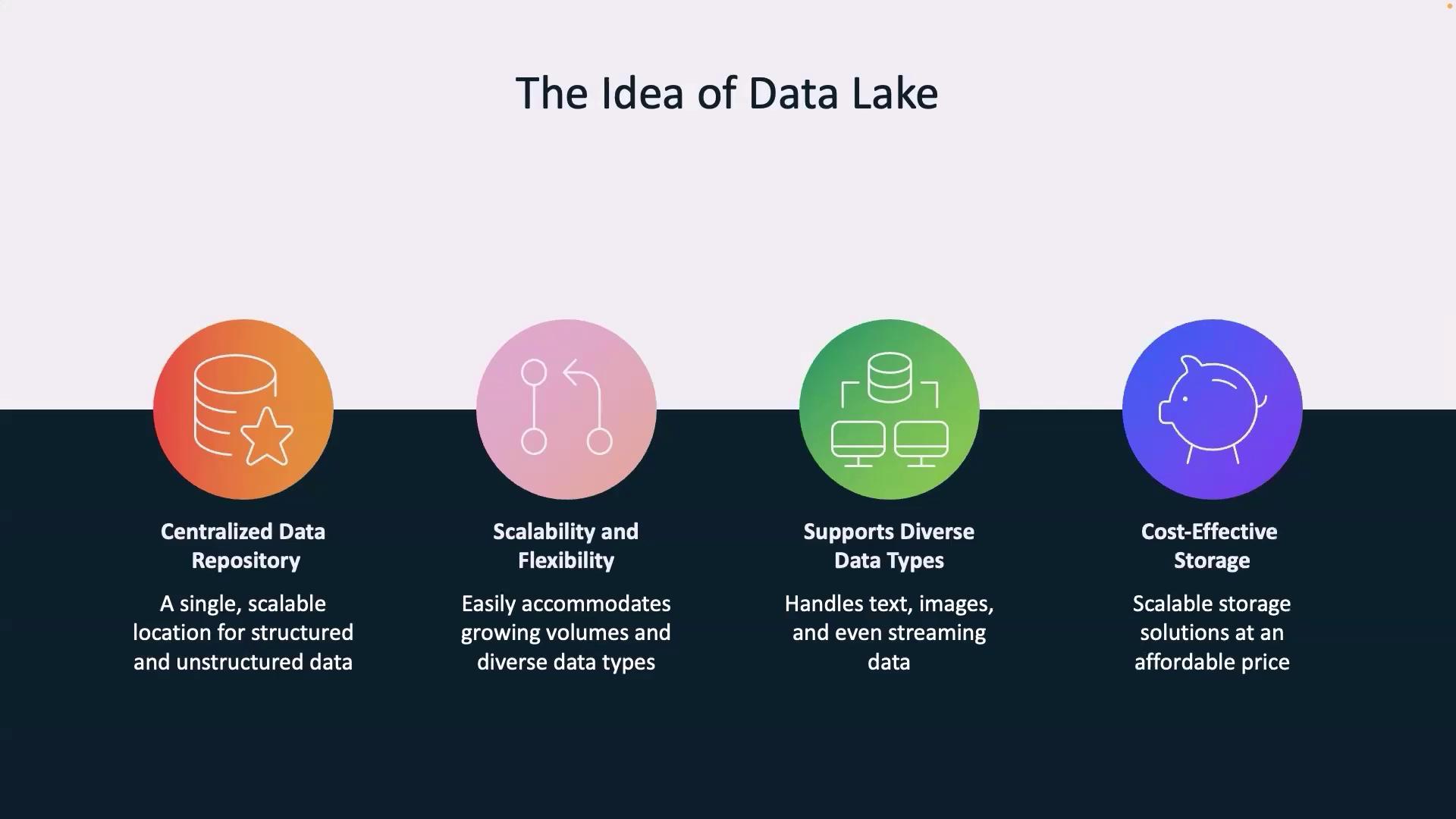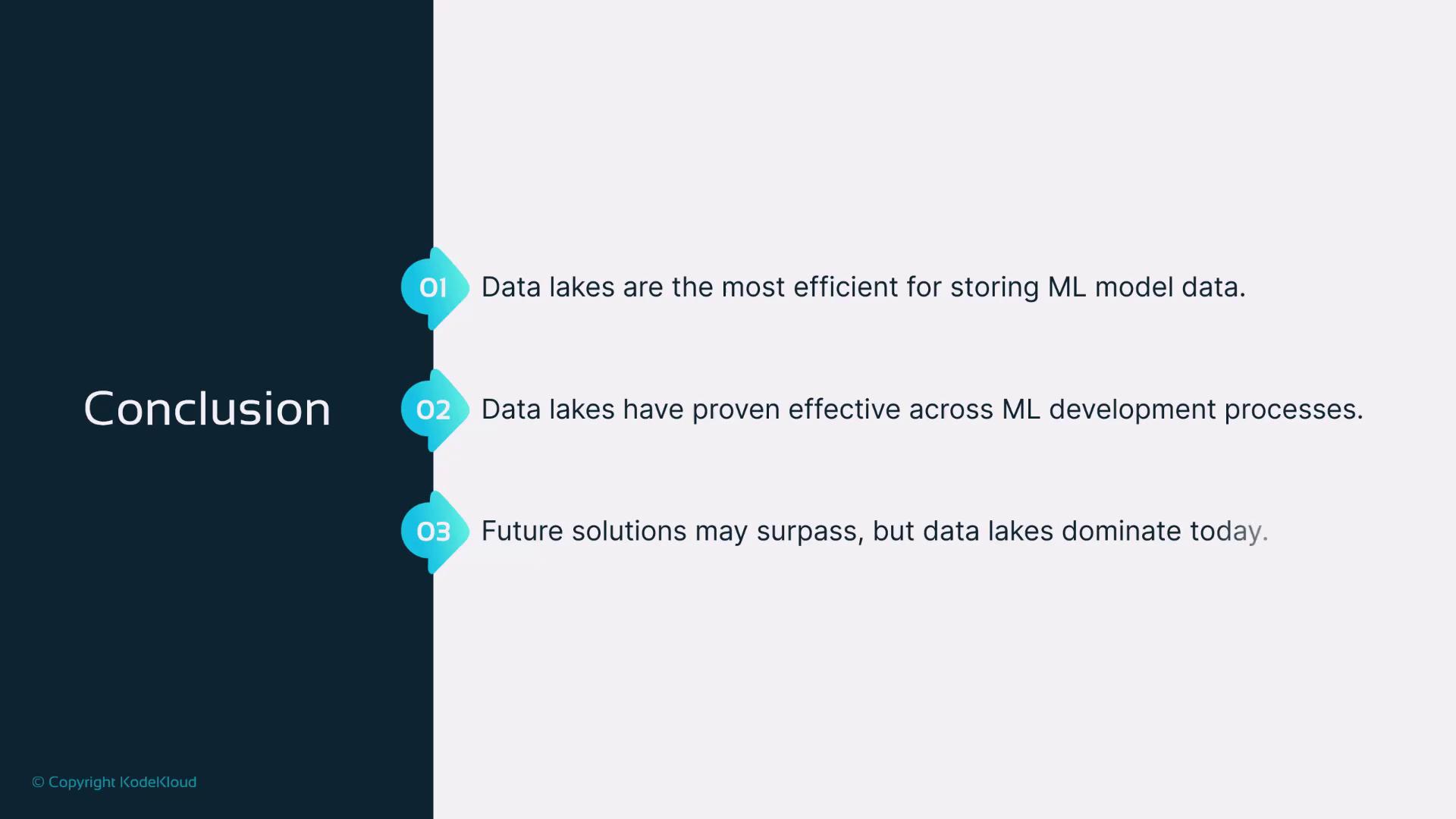Fundamentals of MLOps
Data Collection and Preparation
Idea of Data Lake
Welcome back! In this lesson, we delve into the concept of a data lake—an essential component in modern data architecture.
Previously, we explored processing diverse organizational data using the ETL approach. After transforming data into a unified format, the next challenge is selecting the right storage solution. This is where the data lake comes into play.
What Is a Data Lake?
A data lake is not a tool or a database, but rather an architectural design that offers a centralized storage system for all your data types. Here are the key features that make data lakes an attractive solution for businesses:
Centralized Data Repository
A data lake provides a single, massive storage space that consolidates structured data (e.g., sales records) and unstructured data (e.g., customer reviews). For instance, a large retailer might store its inventory, sales, and customer interaction data in one unified repository, effectively eliminating data silos and simplifying both access and analysis.Scalability and Flexibility
Data lakes are built to handle ever-growing volumes of information. Whether you're experiencing a surge in website traffic during a Black Friday sale or integrating data from new IoT devices, data lakes scale seamlessly. Companies like Tesla process terabytes of sensor data from autonomous vehicles in their data lakes, enabling them to manage increased data volumes and complex data types over time.Support for Diverse Data Types
These systems can store any kind of data—from simple text logs to complex images, videos, and real-time streaming data. Streaming platforms like Netflix use data lakes to manage viewing patterns, video metadata, and quality-of-service data simultaneously.Cost-Effectiveness
Data lakes are implemented using existing blob storage infrastructures such as Amazon S3, Azure Data Lake, or Google Cloud Storage, making them a cost-effective solution. They provide a budget-friendly alternative to traditional databases by storing raw data without the need for extensive preprocessing.

Note
Data lakes are particularly beneficial for machine learning applications. Storing all types of processed data in one place increases the accuracy and efficiency of machine learning models.
Advanced Capabilities of Data Lakes
Beyond basic storage, data lakes facilitate advanced data processing and analytics:
- Enhanced Data Security and Governance: They provide robust mechanisms for data security, ensuring that data is both protected and well-governed. We will explore these aspects in more detail in upcoming lessons.
- Seamless Integration with Analytical Tools: Data stored in platforms like Amazon S3 can be easily accessed with tools such as Athena, Business Intelligence (BI) platforms, or Tableau, streamlining data analysis and visualization.
Data Lake Adoption in MLOps
For MLOps engineers, adopting a data lake architecture is a logical step. The centralized storage and streamlined data access it provides are crucial for efficient machine learning model development. While newer solutions may emerge, the proven efficiency of the data lake model continues to dominate the current landscape.

Warning
Ensure that data security and governance best practices are implemented when deploying a data lake solution to safeguard sensitive information.
What's Next?
This concludes our discussion on the data lake concept. In the next lesson, we will shift our focus to the data transformation process, exploring how raw data is refined and prepared for analytical use.
Thank you for reading, and stay tuned for more insights on data processing and machine learning!
Watch Video
Watch video content